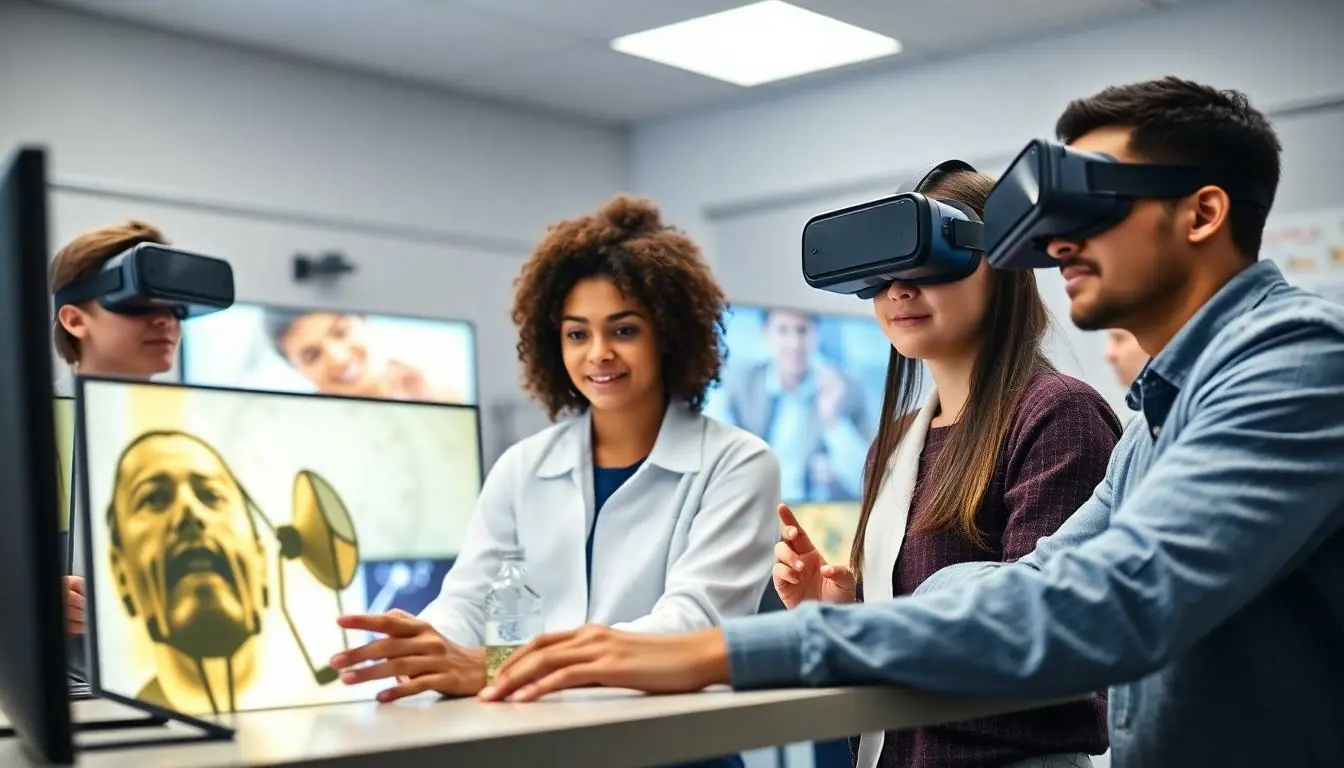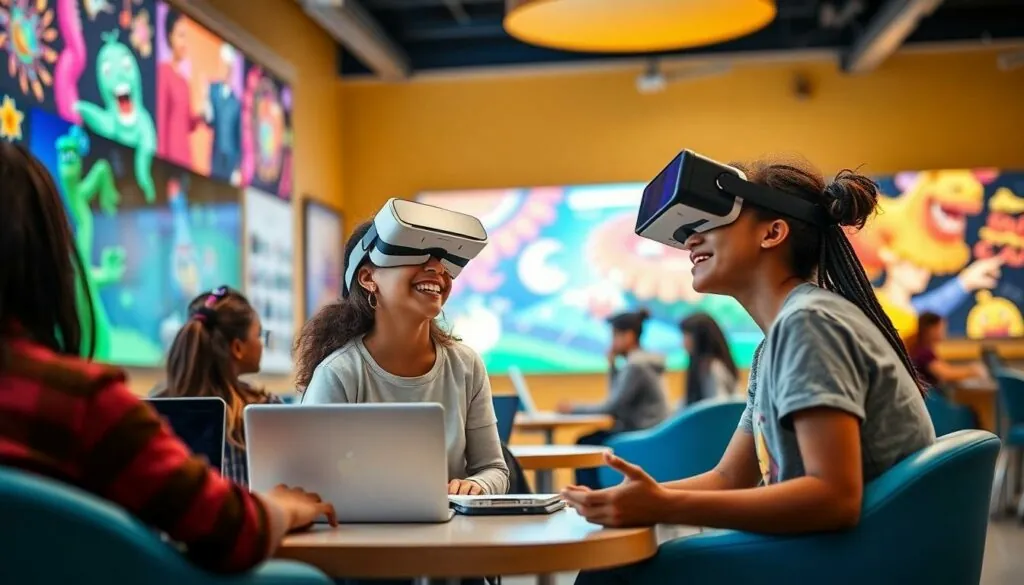Table of Contents
ToggleIn today’s fast-paced world, classrooms are transforming into tech-savvy havens where traditional chalkboards are replaced by interactive screens and virtual reality headsets. Premium tech innovations in teaching aren’t just cool gadgets; they’re revolutionizing how students learn and engage. Imagine a classroom where students can explore ancient civilizations through immersive experiences or collaborate on projects with peers halfway across the globe—all thanks to cutting-edge technology.
Overview of Premium Tech Innovations in Teaching
Premium tech innovations are reshaping teaching methods, creating enriched learning environments. Interactive screens facilitate dynamic presentations, allowing educators to engage students more effectively. These screens support multimedia, helping convey complex concepts visually.
Virtual reality headsets provide immersive experiences that transport students to different worlds, enhancing their understanding of subjects like history and science. With VR, learners can explore ancient civilizations or conduct virtual experiments safely. Additionally, augmented reality applications overlay digital information onto the real world, offering context that deepens student engagement.
Artificial intelligence tools analyze individual learning patterns, personalizing educational experiences. This technology adjusts content based on performance, helping students grasp difficult topics at their pace. Furthermore, AI-driven chatbots assist with instant support, answering questions and providing resources.
Gamification also plays a vital role in modern classrooms. Platforms that incorporate game elements motivate students to achieve goals while collaborating with peers. These experiences foster teamwork and critical thinking, essential skills for the future workforce.
Cloud computing enhances accessibility, allowing students to access resources anytime, anywhere. This capability promotes collaboration on projects, enabling learners to connect and innovate across geographic boundaries. Institutions adopting cloud technology benefit from reduced costs and improved resource management.
Data analytics tools provide educators with insights into student performance trends. By analyzing this data, they can identify areas requiring intervention or enrichment. Educators tailoring their approaches based on analytics lead to higher engagement and academic achievement.
These premium tech innovations are not just about convenience; they revolutionize the educational landscape, preparing students for a technology-driven world.
Benefits of Premium Tech Innovations

Premium tech innovations in teaching offer numerous advantages. They enhance engagement, foster collaboration, and support individualized learning experiences.
Enhanced Learning Experiences
Interactive screens capture attention, allowing students to engage with multimedia presentations actively. Virtual reality headsets immerse learners in historical events or complex scientific concepts, creating memorable experiences. Educators can utilize gamification strategies to introduce friendly competition, fostering collaboration and developing critical thinking skills. These elements work together, creating a dynamic learning atmosphere that encourages exploration and discovery.
Accessibility and Inclusivity
Premium tech tools significantly improve accessibility for diverse learners. Cloud computing enables project collaboration from various locations, ensuring students have the resources they need. Technologies like speech recognition assist students with disabilities, promoting equal participation in classroom discussions. The ability to access adaptive learning platforms empowers educators to cater to individual learning styles, further enhancing inclusivity in educational settings.
Types of Premium Technologies
Premium technologies significantly enhance the teaching and learning experience. Various innovations contribute to this transformation.
Interactive Learning Tools
Interactive learning tools engage students effectively. Examples include smartboards and educational apps that incorporate multimedia elements. Students actively participate in lessons, resulting in increased retention of information. These tools enable real-time feedback, allowing educators to adjust their teaching strategies on the spot. Schools report improved student performance when using interactive technology.
Virtual Reality and Augmented Reality
Virtual reality and augmented reality create immersive learning environments. VR headsets transport students to historical sites or deep into the cosmos, enriching their understanding of complex subjects. AR applications overlay digital information onto the real world, making difficult concepts easier to grasp. Both technologies promote hands-on learning, making education more relatable and captivating. Educators notice higher engagement levels among students using these tools.
Artificial Intelligence in Education
Artificial intelligence transforms personalized learning experiences. AI analyzes student data to identify unique learning patterns and adapts content accordingly. This customization enables targeted support, enhancing comprehension for various learners. AI-driven chatbots provide instant assistance, answering student queries without delay. With these tools, educators gain insights into performance trends, allowing for more effective teaching interventions.
Challenges of Implementing Premium Tech Innovations
Implementing premium tech innovations in education presents several challenges that institutions must navigate.
Cost Considerations
Premium tech innovations often come with high upfront costs. Schools face expenses for purchasing hardware like interactive screens and VR headsets. Additionally, licenses for software tools and platforms add recurring costs. Ongoing maintenance and upgrades increase the financial burden further. Institutions may struggle to allocate budgets, especially in underfunded areas. Return on investment can be hard to measure, leading to uncertainty about long-term benefits. Many administrators require a clear understanding of cost-effectiveness to justify these expenses. Grants and funding opportunities can mitigate some costs, but they may not always cover comprehensive needs.
Training and Support
Training educators on new technology is essential for successful implementation. Not all staff are familiar with advanced tools, creating a knowledge gap. Ongoing professional development programs can alleviate this issue. Support staff play a critical role in assisting teachers with technology integration. Ensuring all staff receive adequate training requires time and resources. Resistance to change often occurs, leading to a lack of confidence in using new tools. User-friendly interfaces can mitigate this apprehension, making it easier for educators to adopt innovations. Support networks and peer mentorship can enhance the transition process for teachers.
Future Trends in Premium Tech Innovations in Teaching
Artificial intelligence continues to redefine the educational landscape by delivering customized learning experiences. Educators use algorithms to evaluate student data, identifying unique learning patterns and tailoring resources to meet individual needs. This personalization enhances engagement and fosters a deeper understanding of subjects.
Virtual and augmented reality technologies gain traction, creating immersive environments that captivate students. Educators utilize VR to transport learners to historical events or complex scientific phenomena, making abstract concepts tangible. Engaging with these technologies boosts retention and encourages active participation.
Cloud computing facilitates collaboration, allowing students to access resources and work together from any location. Tools like Google Workspace streamline project management, making it easier for teams to share and edit documents in real-time. This accessibility fosters teamwork and prepares students for a more connected world.
Gamification remains a significant trend, energizing the learning process through game elements. Educators implement platforms that integrate challenges and rewards, motivating students to enhance their skills in a fun way. As game-like frameworks promote critical thinking, students develop problem-solving abilities while enjoying their learning experience.
Data analytics plays a crucial role in improving educational outcomes. By examining student performance metrics, educators gain insights into trends and areas needing attention. This information supports more informed interventions, allowing for timely adjustments in teaching strategies.
Emerging technologies like 5G will further enhance access to digital learning tools. Faster internet speeds enable seamless streaming of high-quality video lessons and real-time feedback in virtual classrooms. Increased connectivity expands opportunities for students and educators alike.
Overall, these future trends in premium tech innovations will continue shaping the way teaching and learning occur, preparing students for the demands of an increasingly digital society. Each advancement contributes to an enriched educational experience that emphasizes engagement, collaboration, and personalized learning paths.
Premium tech innovations are setting a new standard in education by transforming traditional teaching methods into dynamic learning experiences. The integration of interactive tools virtual reality and artificial intelligence not only enhances student engagement but also personalizes learning paths to meet individual needs.
As educators embrace these advancements they’re not just preparing students for academic success but also equipping them for a technology-driven future. While challenges remain in implementation ongoing support and training will be vital for maximizing the potential of these tools.
The future of education is bright with these innovations leading the charge towards a more collaborative and immersive learning environment.







